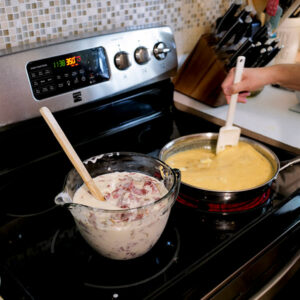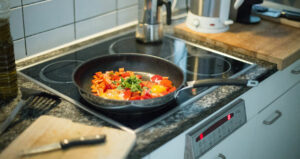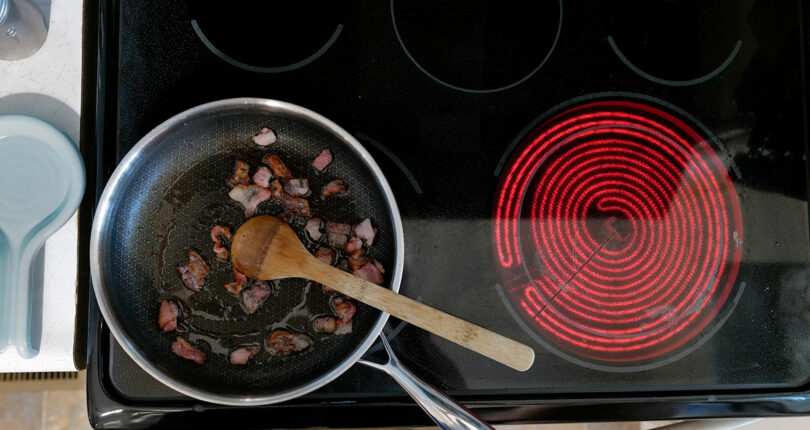Q: I’m considering a new stovetop.
Can you explain the different options available?
A: I have found that most people who enjoy cooking have pretty strong opinions about their preferred fuel choice: gas or electric. Induction is growing in popularity as a newer option for home stovetops.
According to a study completed by Electric Power Research Institute, 74% of the energy from an electric range is transferred to food versus 40% on a gas range. Induction cooktops are the most efficient option at 90% of the energy transferred to food. Regardless of your stovetop choice, choosing the right size pots and pans to fit the burner is important to avoid wasting energy.

No matter the type of stove, matching pot and pan sizes to the burner is important to avoid wasting energy.
Electric cooktops are a tried-and-true option for many homes, and they are typically the most affordable option. Glass-top models offer a cleaner look than the traditional coil elements and are easier to clean but tend to be a bit more expensive. The most common complaint about electric cooking is that the heating controls are not as fast or precise as gas ranges.
Many home chefs prefer gas stovetops because you can easily see the size of the flame, a visual clue that helps you control the cooking temperature. Temperature adjustments are also faster and more precise than on electric stovetops. However, there are some concerns with safety and indoor air quality associated with gas stoves. To help reduce indoor air pollution, always use your exhaust fan when using your gas stovetop.
Ideally, the exhaust fan should be vented to the exterior of the home. Access is also a consideration. Natural gas is typically available in more populated areas, while rural customers may need a propane storage tank installed outside their homes to use a gas stove.

Induction stovetops use electromagnetic energy to heat the pan, reducing energy waste.
An induction stovetop can offer a higher-end cooking experience than a standard electric stovetop. Induction stovetops use electromagnetic energy to heat the pan, reducing energy waste. Instead of heating the stove’s surface, they heat the pans themselves. Because the pans heat directly, you don’t have to wait for the heat to transfer like you do with gas and electric stovetops; this results in faster cooking times. They also allow for more precise temperature control, which can deliver better results.
Induction cooktops are typically more expensive than similar gas or electric models. They also require you to use specific cookware. Stainless steel and cast-iron cookware are both compatible with induction cooktops. If you want to test your pots and pans to see if they are induction-compatible, do the magnet test. If a magnet sticks to the bottom of the pan, it will work on an induction stove.
Cooking on an induction stovetop takes a little time to get used to, but many people have made the switch and enjoy the experience.
Miranda Boutelle is the chief operating officer at Efficiency Services Group in Oregon, a cooperatively owned energy-efficiency company. She has more than 20 years of experience helping people save energy at home.

